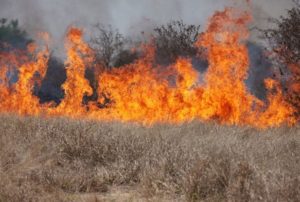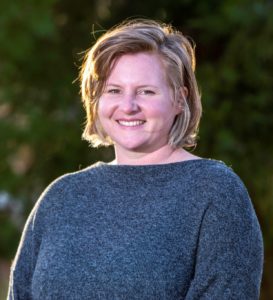Using Preemergence Herbicide to Control Cheatgrass on Your Property
October 27th, 2020
Cheatgrass is probably the most ignitable plant in Nevada’s rangelands. It’s called a “winter annual” which means that it germinates in the fall and quickly grows until cold temperatures arrive. It lays dormant in the winter, then continues growing through early spring until it dies in the summer right as temperatures are heating up, thus creating a fire hazard. Before dying, it drops seeds into the soil that can remain dormant for years, waiting for the perfect conditions to germinate. Removing cheatgrass from your property is important to creating and maintaining defensible space, but that’s easier said than done.
One method of controlling cheatgrass would be to try and kill the seedling in the soil by using a preemergence herbicide. I’m not an expert on weeds or herbicides but luckily, I have colleagues at the University of Nevada, Reno Extension who are. In 2018, Melody Hefner, Urban IPM and Pesticide Safety Program Coordinator at Extension explained the difference between “Herbicides” and "Preemergence herbicides” in an article on growyourownnevada.com about “Mistakes to avoid when applying preemergence herbicides.”
"Fall is a good time to get a head start on weed control by applying preemergence herbicides. Herbicides are chemicals that kill plants. Preemergence herbicides target plant seeds, providing a chemical barrier. As the seeds begin to sprout, they encounter this chemical barrier, and cell division in the young root system is prevented. This results in seedling death before the plants ever emerge from the soil.”
If successful, preemergence herbicides can kill a seedling before it emerges, which can save you a lot of time pulling, mowing and weed whacking. If you want to use preemergence herbicide to control cheatgrass, now it the time!
However, before you decide to use a preemergence herbicide there are some factors to consider to determine if it’s a good choice for you and your property. This week, I reached out to Melody and asked her to explain some (but not all) of the most important considerations for homeowners who are thinking about using a preemergence herbicide:
Timing
Winter annuals, like cheatgrass (downy brome), medusahead, flixweed, yellow starthistle – these sprout in fall, so preemergence herbicide needs to be applied in the fall. Summer annuals, like pigweeds, kochia, etc. they sprout in early spring so preemergence herbicides will need to be applied in the early spring.
The Persistence of the Product
Will it control weeds for 2 months, 6 month, 2 years? Many preemergence herbicides do not have a long persistence in the environment so they may require more than one application.
Correct Application
The most difficult thing about preemergence herbicide applications is that the product must be watered in to activate it. On irrigated landscapes, it is pretty easy to make that happen. On non-irrigated lands, you’ve got to plan your application for a “meaningful” precipitation event which is really tough to predict in our area most of the time! Additionally, you can’t apply most products when the ground is frozen, so some of those early spring applications can be affected by the weather also.
Wind
Wind can place a major role in messing up a preemergence herbicide application, especially if the ground is dry. Our sometimes-strong winds can blow the applied preemergence herbicide to a non-target area. If the ground is wet, the application tends to stick to the surface and will not move as readily in the wind. So, you need to monitor the weather forecast for both precipitation AND high winds when you are planning a preemergence herbicide application.
Slope
Applications on slopes are tough, because you want the material to stay in place, not roll downslope. Watering the application in on a slope can be difficult for that same reason – the applied preemergence herbicide will sheet wash with the applied water downslope.
More Resources:
- Read the rest of Melody’s article on growyourownnevada.com, “Mistakes to avoid when applying preemergence herbicides.”
- For some more information on using preemergence herbicides, including some tips and specific information about product persistence check out the fact sheet, "Using Preemergence Herbicides foe Weed Control in the Home Landscape."

Megan Kay is the Outreach Coordinator for the Living With Fire Program. She served as a wildland firefighter for five seasons in Carson City, Virginia City and Incline Village before earning her Bachelor of Arts studying fine arts and graphic design. She’s passionate about serving her community. While working as the Associate for the Nevada Arts Council’s Touring Exhibition Program she traveled all over the state of Nevada installing art, getting to know Nevadan’s in every county and building lasting relationships. When she’s not busy helping Nevadan’s learn how to minimize the threat of wildfire in their communities, she’s probably at home with her husband and daughter or playing music and crafting with her friends. Contact Megan at kaym@unr.edu.
